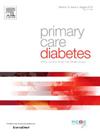Deprescribing of preventive medications in palliative care patients living with multiple long-term conditions in their final 12 months of life: A retrospective cohort Clinical Practice Research Datalink study
IF 2.6
4区 医学
Q3 ENDOCRINOLOGY & METABOLISM
引用次数: 0
Abstract
Objectives
To investigate the patterns and trends associated with deprescribing of preventive medications in the final 12 months of life in palliative patients living with multiple long-term conditions using the Clinical Practice Research Datalink.
Participants
All patients with a medcode/readcode for palliative care assigned to their profile with a medcode/readcode for a cardiometabolic condition. All patients were on therapeutic interventions for their condition/s.
Primary and secondary outcome measures
the trends of medication deprescribing of preventive medications in the final twelve months of life in those known to be end-of-life.
Results
Preventive medication deprescribing was only observed in a very small cohort of patients. The findings were consistent across all six medication groups tested. Deprescribing was observed in a range of 2–60 patients with the most deprescribing efforts being associated with antihypertensive medications (n = 177), and antiplatelet medications (n = 70), and antihyperglycaemic medications (n = 10).
Conclusions
Deprescribing practices are not commonplace in patients with a known end-of-life designation with low patient numbers (range 2–60) undergoing the intervention, thus potentially reducing the quality of life in these patients final twelve months of life.
CPRD ID
#22_002253, linkage request 2914
在临终前12个月患有多种长期疾病的姑息治疗患者中减少预防性药物处方:一项回顾性队列临床实践研究数据链研究
目的:利用临床实践研究数据链(Clinical Practice Research Datalink)调查患有多种长期疾病的姑息治疗患者生命最后12个月预防性药物处方的模式和趋势。参与者:所有患有姑息治疗的医疗编码/阅读编码的患者,分配给他们的医疗编码/阅读编码为心脏代谢疾病。所有患者均接受治疗干预。主要和次要结果测量:在已知生命结束的患者生命的最后12个月,预防性药物处方的趋势。结果:预防性药物处方解除仅在一小部分患者中观察到。这一发现在所有六个药物组的测试中都是一致的。在2-60例患者中,降压药物(n = 177)、抗血小板药物(n = 70)和抗高血糖药物(n = 10)的降压程度最高。结论:在接受干预的已知临终患者数量较少(范围2-60)的患者中,减处方做法并不常见,因此可能降低这些患者最后12个月的生活质量。CPRD ID: #22_002253,联动请求2914。
本文章由计算机程序翻译,如有差异,请以英文原文为准。
求助全文
约1分钟内获得全文
求助全文
来源期刊

Primary Care Diabetes
ENDOCRINOLOGY & METABOLISM-PRIMARY HEALTH CARE
CiteScore
5.00
自引率
3.40%
发文量
134
审稿时长
47 days
期刊介绍:
The journal publishes original research articles and high quality reviews in the fields of clinical care, diabetes education, nutrition, health services, psychosocial research and epidemiology and other areas as far as is relevant for diabetology in a primary-care setting. The purpose of the journal is to encourage interdisciplinary research and discussion between all those who are involved in primary diabetes care on an international level. The Journal also publishes news and articles concerning the policies and activities of Primary Care Diabetes Europe and reflects the society''s aim of improving the care for people with diabetes mellitus within the primary-care setting.
 求助内容:
求助内容: 应助结果提醒方式:
应助结果提醒方式:


